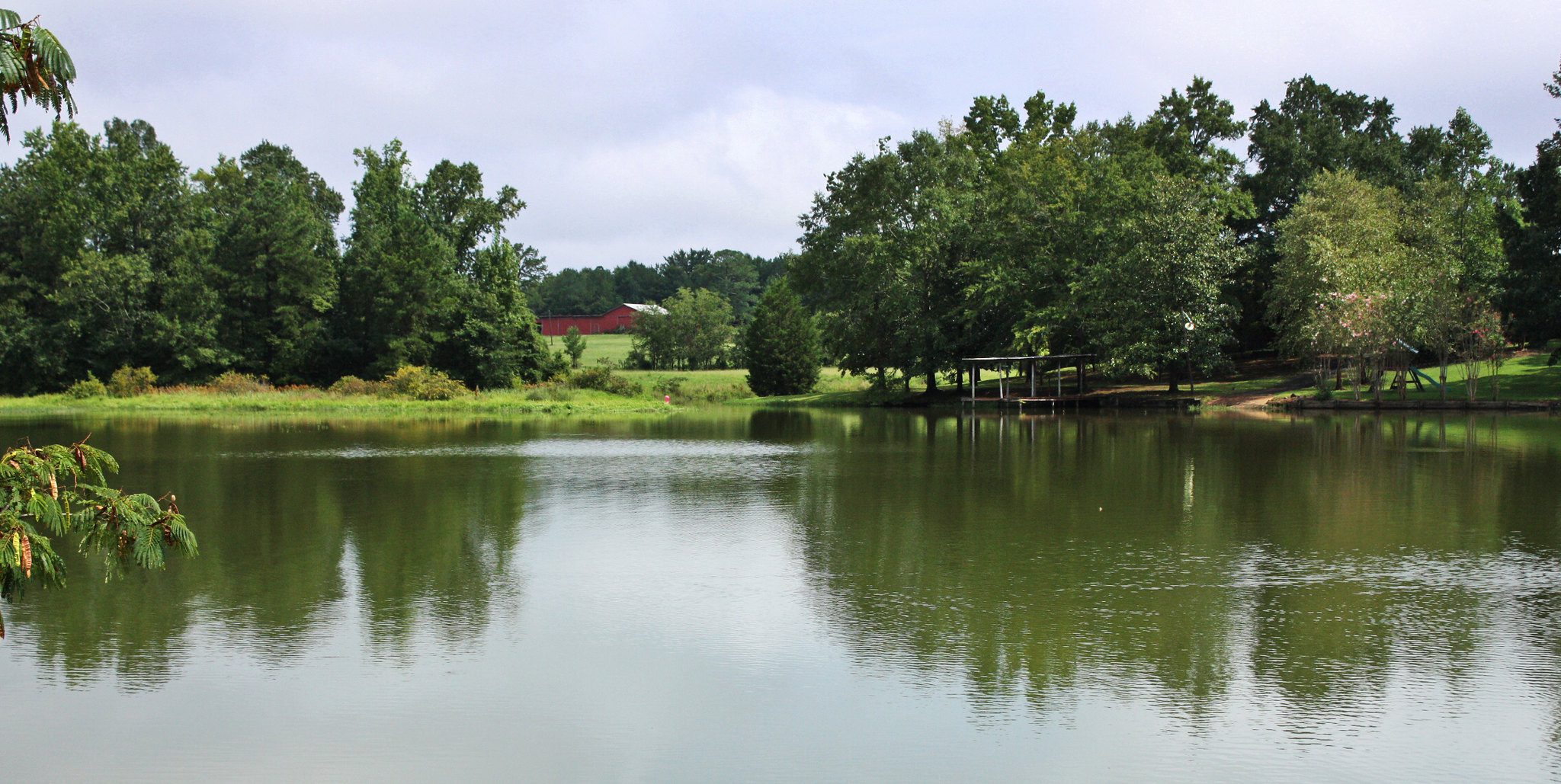Forestry & Wildlife

AUBURN UNIVERSITY, Ala. — Spring cleaning is for more than indoor messes. Recreational ponds may need a spring spruce up, too. Norm Haley, an Alabama Cooperative Extension System regional agent, said prevention is one of the most effective methods for reducing problematic aquatic weeds and filamentous algae.
“Excess aquatic plants are caused by shallow and clear water, excess nutrients and intentional and accidental introductions,” Haley said. “Limiting these characteristics with a combination of proper pond construction and regular care and maintenance is key to reducing weed problems.”
Haley said it is often more economical and easier to prevent weed growth than it is to spend time and money on controlling an existing weed problem.
Prevention through Construction
Prevention of aquatic weeds and algae begins during pond construction.
“Steep 3 to 1 slopes, which drop quickly into deep water, can help to prevent weeds from rooting and limit the sunlight exposure of bottom sediments,” Haley said. “Construction of a sediment basin upstream of a pond or lake will help to trap out soil and maintain pond depth.”
Stop Soil Erosion
Haley said soil erosion and fertilizer runoff, including livestock waste, are major causes of water weeds.
“Soil erosion magnifies the weed problems because sediments carried into the pond shallow the margins and transport nutrients that allow for weeds to quickly invade,” Haley said.
Wise land use practices can also help prevent weeds and algae. Some practices include the following:
- Avoid adding grass clippings
- Contour plowing
- No-till farming
- Strip cropping
- Protect shelter belts
- Prevent overgrazing
- Exclude livestock (waterfowl included)
Implement these practices will significantly reduce aquatic weed problems and increase the life of the pond.
Pond Fertilization
Fertilizing ponds is another method to reduce submerged weed growth and filamentous algae, while simultaneously increasing fish production.
“Proper fertilization creates a translucent, green and microscopic algae bloom that limits sunlight penetration and in turn limits weed growth while producing four times more fish,” Haley said. “Fertilization must be done in the spring, before weed growth begins and once water temperatures reach 60 degrees Fahrenheit.”
Haley said consistent and careful fertilization based on water clarity is important. Otherwise, problems associated with under or overfertilization can occur. These include increased weed growth, fish kills or poor fish growth.
Biological Weed Control
Biological control measures, like grass carp or tilapia, are another viable option for weed prevention.
“Grass carp feed on most submerged weeds in ponds,” Haley said. “Unlike common carp, they do not disturb bottom sediments that muddy the pond or disrupt the spawning of bass and bream, nor do they reproduce in ponds.”
Haley said tilapia have been show to control watermeal and filamentous algae. However, tilapia die at water temperatures below 50 degrees Fahrenheit, so they must be restocked each spring at a rate of 15 to 25 pounds per acre.
More Information
Learn more about spring pond prep by visiting www.aces.edu or calling your county Extension office. Learn more about stocking grass carp in the Alabama Extension publication, “Using Grass Carp for Controlling Weeds in Alabama Ponds.” Lists of commercial providers for grass carp and tilapia are also available on the Extension website.

